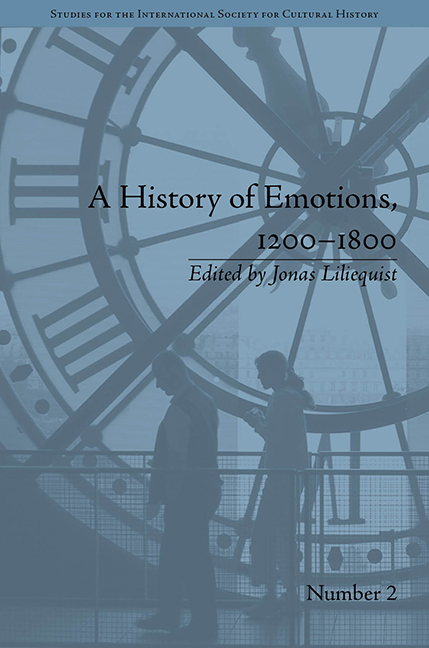Book contents
- Frontmatter
- Contents
- List of Contributors
- List of Figures
- Introduction
- I Theoretical Issues
- II Emotional Repertoires
- III Music and Art
- IV Gender, Sexuality and the Body
- 8 Emotions and Gender: The Case of Anger in Early Modern English Revenge Tragedies
- 9 Beauty, Masculinity and Love Between Men: Configuring Emotions with Michael Drayton's Peirs Gaveston
- 10 ‘Pray, Dr, is there Reason to Fear a Cancer?’ Fear of Breast Cancer in Early Modern Britain
- V Uses of Emotions
- Notes
- Index
9 - Beauty, Masculinity and Love Between Men: Configuring Emotions with Michael Drayton's Peirs Gaveston
from IV - Gender, Sexuality and the Body
- Frontmatter
- Contents
- List of Contributors
- List of Figures
- Introduction
- I Theoretical Issues
- II Emotional Repertoires
- III Music and Art
- IV Gender, Sexuality and the Body
- 8 Emotions and Gender: The Case of Anger in Early Modern English Revenge Tragedies
- 9 Beauty, Masculinity and Love Between Men: Configuring Emotions with Michael Drayton's Peirs Gaveston
- 10 ‘Pray, Dr, is there Reason to Fear a Cancer?’ Fear of Breast Cancer in Early Modern Britain
- V Uses of Emotions
- Notes
- Index
Summary
Let me start by suggesting that early modern men had a problem with love – a problem that had its roots deep in classical and medieval culture. Let us take it in five easy steps. Emotions were considered to be bodily reactions to outward stimuli. Love, one of the most common of these emotional reactions, was caused by perceiving something good in the world. Good could be sensed with any of the five senses, but the most powerful was sight, and the good perceived by sight was, most often, beauty. The most beautiful objects detected by sight, and so the ones that most had the ability to arouse love, were human beings, especially women. Those most powerfully affected by the beauty of women were men, which made men potential slaves to their affects and affections, and rendered the heady mix of beauty, love and lust an acute dilemma in men's everyday lives.
This account is of course a simplification; both in theory and in practice things were more complicated. Yet this train of thought seems never to have been far from the minds of those commenting on beauty, love and sexual desire. It worked as a standard resource for interpreting gender relations, sensory perceptions and emotional reactions – as a kind of master narrative for plotting the emotional life of both literary characters and actual living persons, extending implicitly backwards and forwards from any of its discrete components.
- Type
- Chapter
- Information
- A History of Emotions, 1200–1800 , pp. 135 - 152Publisher: Pickering & ChattoFirst published in: 2014



